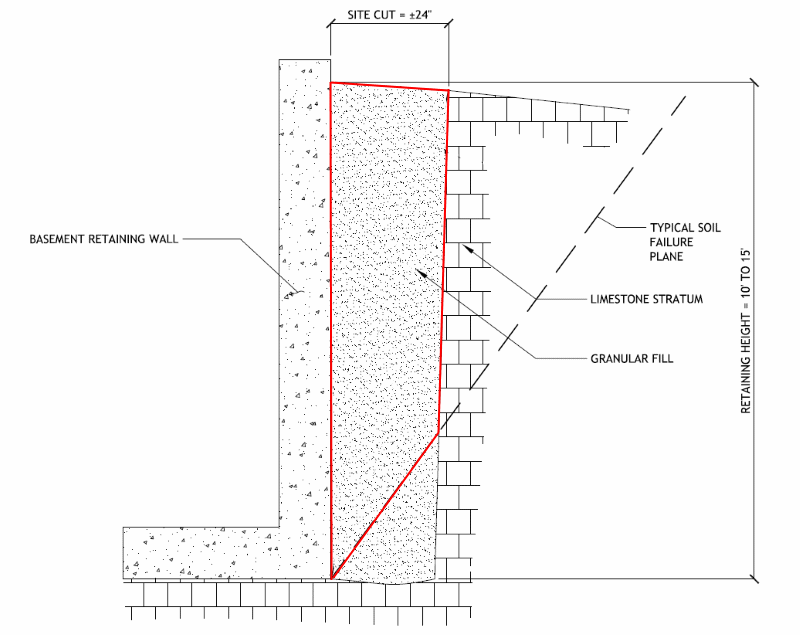bhiggins
Structural
- Oct 15, 2016
- 146
Hi all!
I've got a project here where a basement retaining wall is being loaded with only 2-3 feet width of backfill. The site is on hard limestone so the cut is nearly vertical. The geo report provides active and at rest EFP. Since this is not a standard retaining condition, I'm wondering if these EFP can be reduced based on my situation.
If so, is it appropriate to use a different angle of internal friction or some other rational method? Can this be done without the geo recalculating the EFP for me? I'm just wondering for the future if this can be done without geotechnical intervention.
My guesses are that either the EFP is lower, or the EFP remains the same and the load resembles a triangular distribution that is "capped" off at some point, resulting in a triangular load to a uniform load.
I've got a project here where a basement retaining wall is being loaded with only 2-3 feet width of backfill. The site is on hard limestone so the cut is nearly vertical. The geo report provides active and at rest EFP. Since this is not a standard retaining condition, I'm wondering if these EFP can be reduced based on my situation.
If so, is it appropriate to use a different angle of internal friction or some other rational method? Can this be done without the geo recalculating the EFP for me? I'm just wondering for the future if this can be done without geotechnical intervention.
My guesses are that either the EFP is lower, or the EFP remains the same and the load resembles a triangular distribution that is "capped" off at some point, resulting in a triangular load to a uniform load.

![[idea] [idea] [idea]](/data/assets/smilies/idea.gif)
![[r2d2] [r2d2] [r2d2]](/data/assets/smilies/r2d2.gif)
